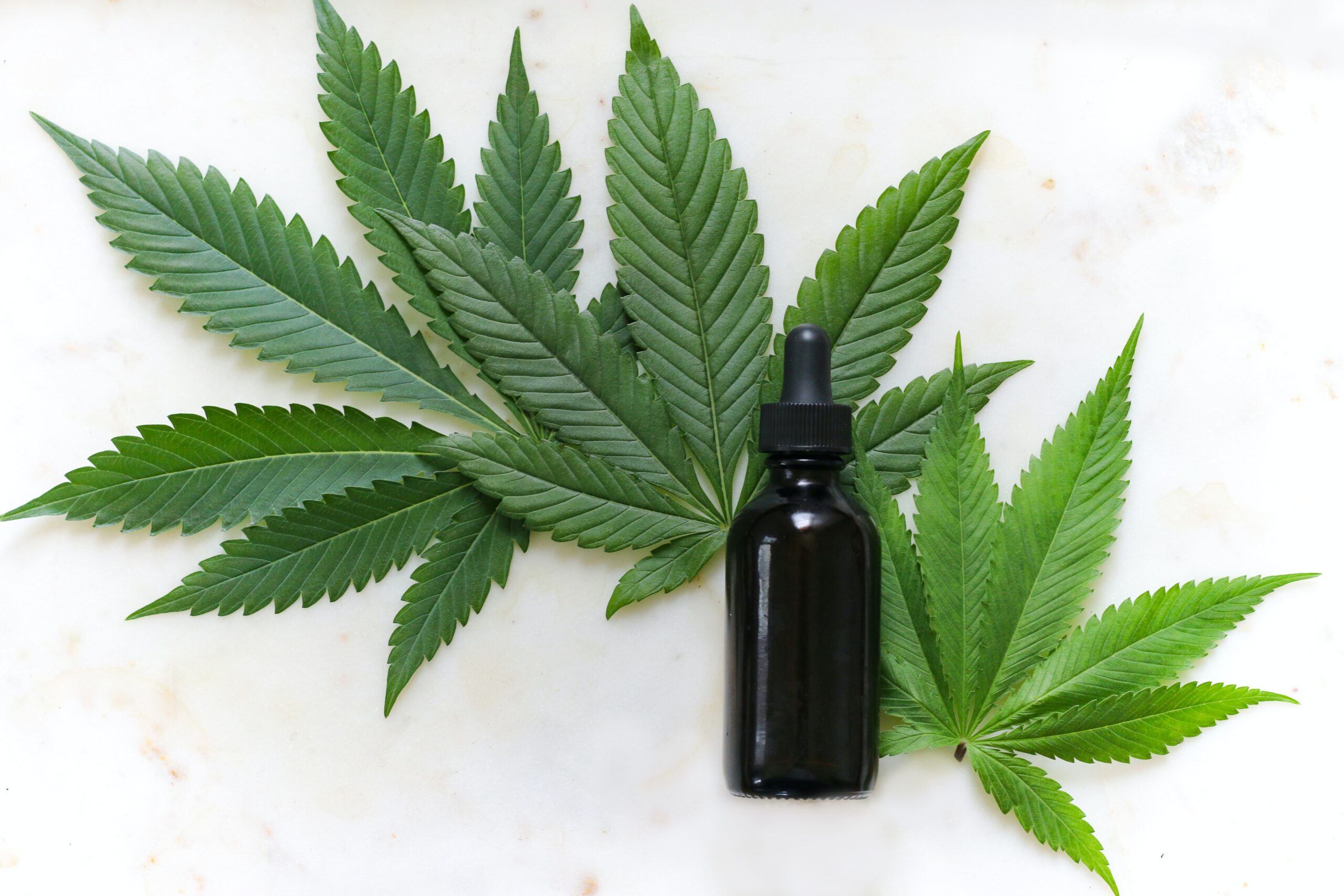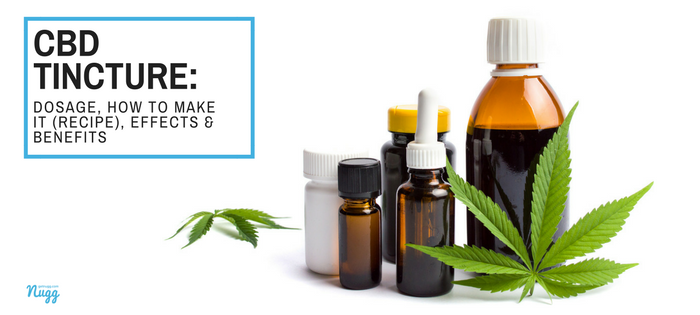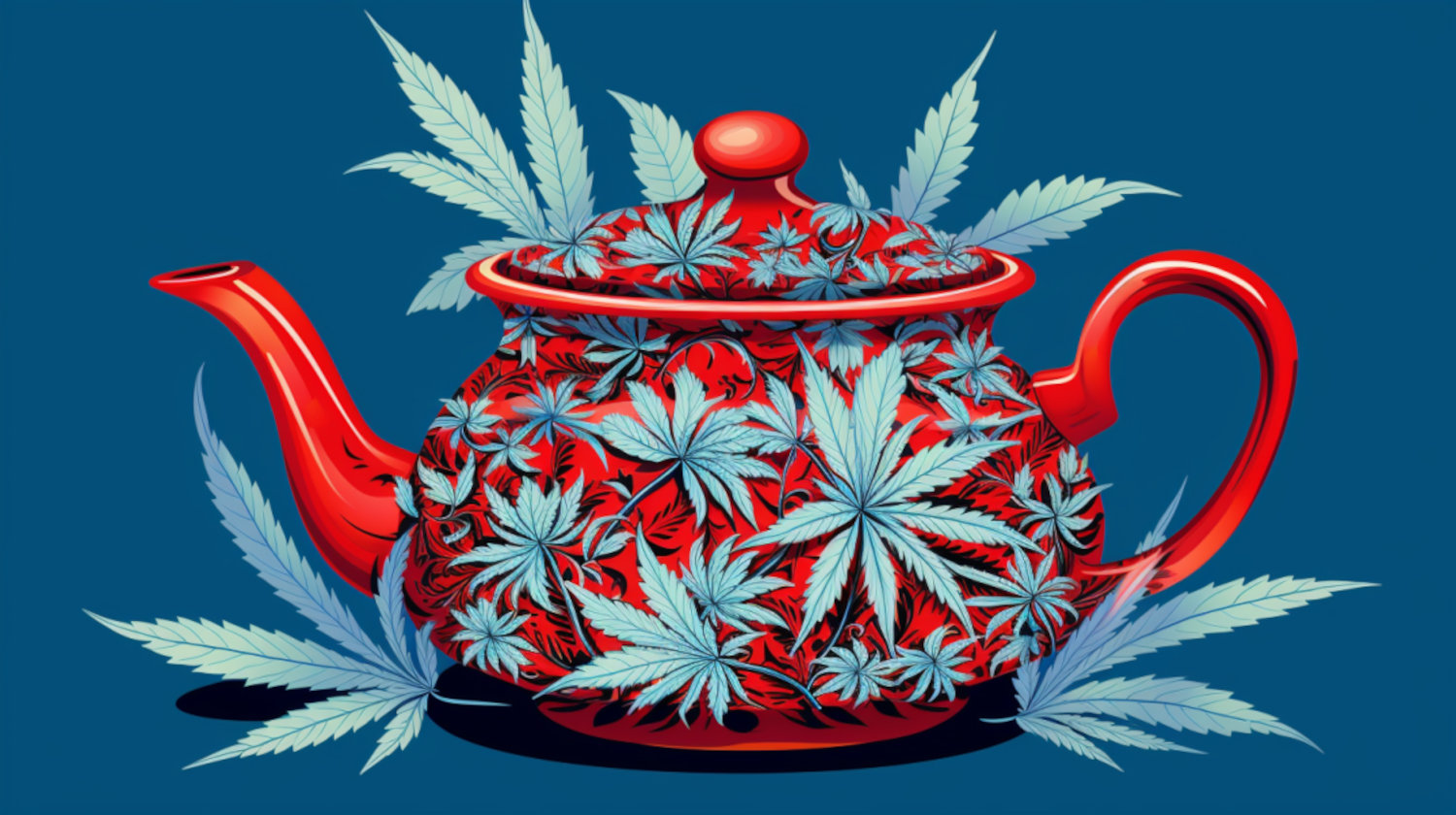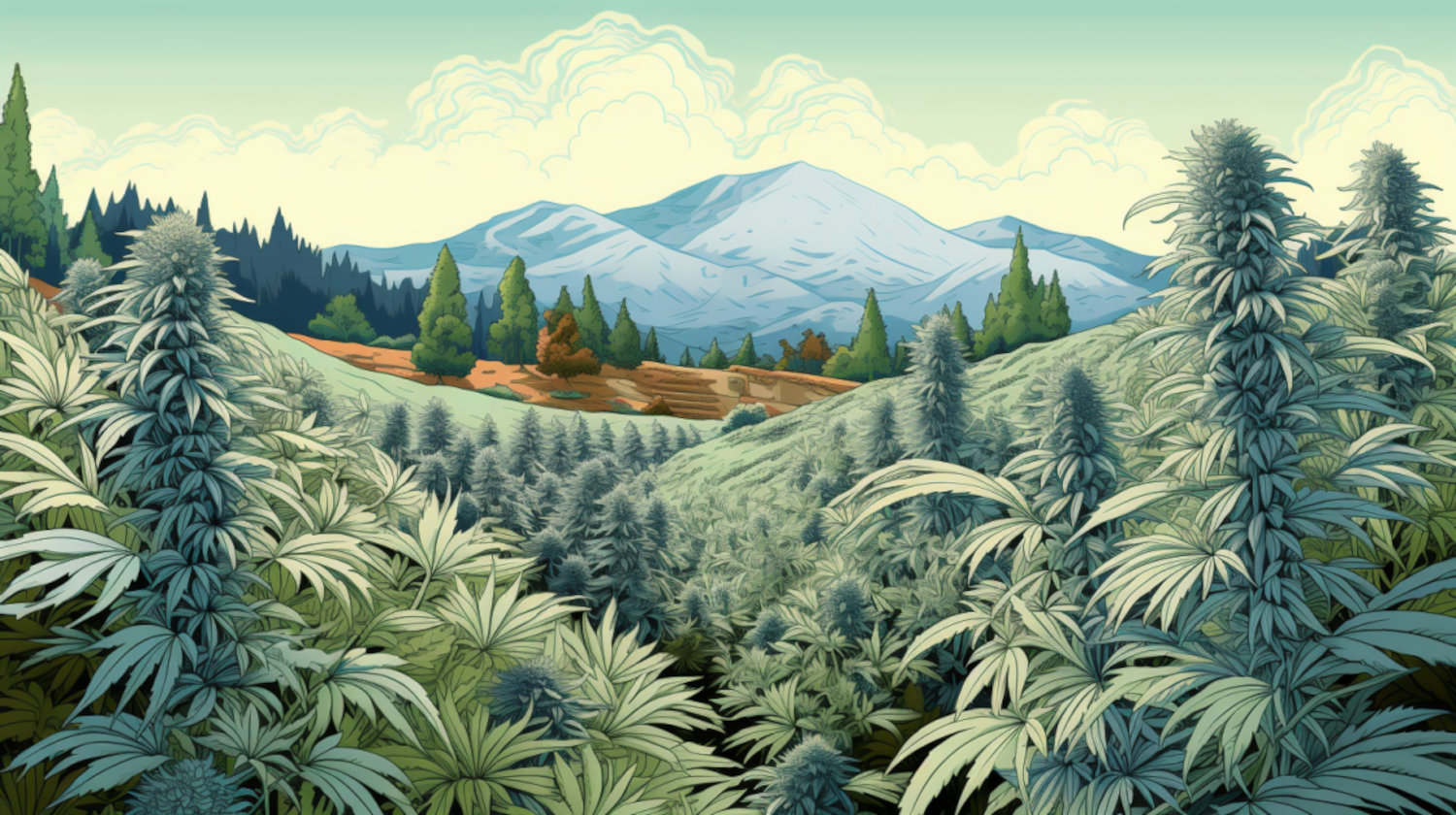In This Article
- What are Cannabis Tinctures?
- History of Cannabis Tinctures
- The 3 Types of Cannabis Tinctures
- CBD Tincture
- THC Tincture
- CBD/THC Tincture
- CBD vs THC vs CBD/THC Tincture Comparison
- Advantages of Cannabis Tinctures
- Drawbacks of Cannabis Tinctures
- How to Use Cannabis Tinctures
- How to Make Your Own Tincture
- How to Store Cannabis Tinctures
- Resources
Since its appearance in US Pharmacopeia in the 1940s, cannabis tinctures have provided another way to consume cannabis. First used as a medicinal product, it slowly waned with the advent of analgesics, only to make a revival with today’s changing attitudes on recreational cannabis.
This article will be your definitive guide to cannabis tinctures: what they are, the different types, and how to use them.
What are Cannabis Tinctures?
Cannabis tinctures are a form of herbal tincture. A traditional tincture is made by soaking an herb, in this case, cannabis, in food-grade alcohol.
Cannabis tinctures can be made either as an MCT oil/cannabis extract mix or a traditional alcohol-based tincture. Cannabis tinctures made with an MCT oil base are more palatable to the consumer, as alcohol can be harsh.
Tinctures are considered a type of cannabis extract, but the industry and consumers typically just use “tincture.” Cannabis tinctures can either contain just cannabis by itself, or blended companion herbs.
History of Cannabis Tinctures
Herbal tinctures have been used for thousands of years as medicine. A form of cannabis tincture was first recorded around the 3rd century AD by Chinese physician Hua T’o, who used a “hemp-boiling-compound” in wine to anesthetize patients. In the 19th century, William O’Shaughnessy reported dissolving cannabis in alcohol to treat tetanus and convulsions. This was one of the first introductions of Indian hemp to Western physicians.1
In the United States, cannabis tinctures were listed in the Pharmacopoeia until 1942. Before cannabis became illegal, cannabis tinctures were available at pharmacies across the country. Once cannabis was made illegal in the United States, cannabis tinctures became almost non-existent.2
Today, the legality of cannabis tinctures varies by state. Cannabis is legal for either medical or adult-use purposes in 38 states and Washington DC. In states where cannabis is not recreationally or medicinally legal, cannabis tinctures with more than 0.3% THC are illegal. Some states without medical cannabis programs permit higher THC levels in CBD dominant tinctures, but typically no more than 1% THC.
The 3 Types of Cannabis Tinctures
CBD Tincture
Over the last four years since the 2018 Farm Bill, CBD tinctures have gained much popularity, and there are thousands on the market available to consumers.
CBD tinctures are primarily produced using cannabis containing 0.3% THC or less, or as it is legally known, hemp. However, legal adult-use or medical cannabis companies can typically make CBD tinctures with more than 0.3% THC to sell at licensed dispensaries.
CBD tinctures are often sold as full-spectrum, broad-spectrum, and isolate, with the latter two intended to contain no “detectable” levels of THC.3 It is important to note that while companies may market a CBD tincture as having no THC, it may still contain trace amounts that could be detectable in a drug test. CBD tinctures can also be sold in their acidic form, CBDA. Companies like Fiddler’s Greens sell cannabis tinctures in acidic and raw forms.
THC Tincture
Tinctures containing THC are produced using high THC cannabis flower and are only available to purchase and possess in legal medical and adult-use cannabis states.
THC tinctures can contain upwards of 800mg of THC in just a 1oz bottle. THC tinctures often have low levels of CBD and other cannabinoids, and like CBD tinctures, some companies also sell them in their acidic form, THCA. Companies like Cannavis and Kan+Ade make high-THC flavored tincture syrups to create delicious infused drinks.
CBD/THC Tincture
Tinctures produced with a combination of cannabinoid ratios, like a 2:1 THC to CBD or a 20:1 CBD to THC, are also available in legal medical and adult-use cannabis states. Tinctures like this may also contain other cannabinoids like CBG or CBN in varying ratios. Tinctures containing ratios with a higher CBD content than THC content, like a 20:1 CBD to THC ratio, can produce a less psychotropic effect than tinctures with a 2:1 THC to CBD ratio.
Companies like Kurvana, Green Revolution, Chemistry, and CareByDesign make a variety of cannabis tinctures in different ratios of cannabinoids for consumers to purchase.
CBD vs THC vs CBD/THC Tincture Comparison
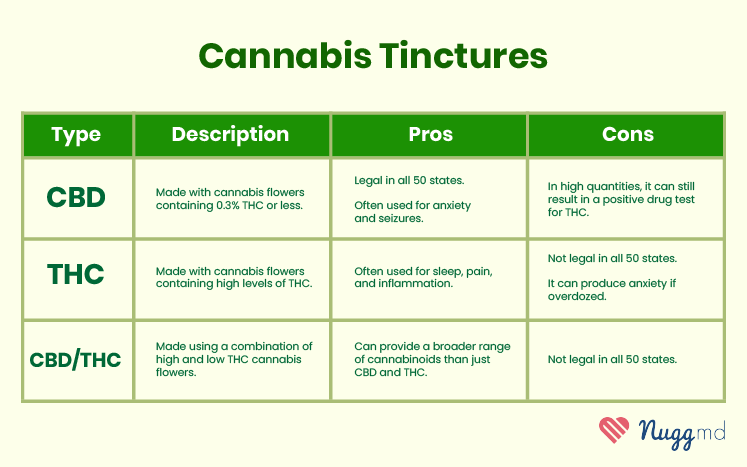
Advantages of Cannabis Tinctures
Cannabis tinctures are a discreet and easy way to utilize cannabis. Compared to oral ingestion of cannabis edibles, they reportedly provide a much faster onset of effects (though it is still recommended consumers allow 2 hours between doses).
Cannabis tinctures often come in smaller bottles, making them easy to store and take along with you throughout the day. In addition, cannabis tinctures typically come with a labeled mL syringe, and if not, one can be purchased to help receive accurate dosing. CBD tinctures can also be mixed with food or beverages, such as baked goods, coffee, tea, or even soup.
With all the varieties of cannabis tinctures consumers can choose from, these blends could provide relief from a number of symptoms. Tinctures are commonly used for seizures, anxiety, sleep, pain, and more.
Drawbacks of Cannabis Tinctures
Cannabis tinctures can be an easy and discreet alternative to smoking or edibles – especially for consumers looking to microdose. But they do come with some drawbacks.
Most tinctures are made with food-grade alcohol, which can be harsh when holding it under the tongue, waiting for it to absorb. And if a consumer doesn’t hold the tincture under their tongue long enough to absorb the majority of the cannabinoids before swallowing, the cannabinoids will absorb through the liver, and there may be more prolonged effects as with traditional edibles.
Not all cannabis tinctures work with the same speed or efficacy; tinctures made with MCT oil or glycerin aren’t absorbed sublingually with as much ease. Additionally, tinctures may be difficult to dose for those who struggle with motor function in their hands or arms, as you need a steady grip to get the right amount and size of drops.
As with all cannabis products, individuals should be aware of potential medication interactions. And because some cannabis tinctures include herbal blends that also pose a risk of medication interaction, such as St. John’s Wort and SSRIs, consumers should take extra care before introducing a cannabis tincture to their medication regimen.
How to Use Cannabis Tinctures
Cannabis tinctures can be consumed in several ways. The most common is oral mucosally, meaning absorbed under the tongue (sublingual) or between the cheek and gum (buccal). Most patients choose the former route of sublingual administration as it is easier to hold a tincture under the tongue.
Cannabis tinctures can also be absorbed orally by swallowing the tincture or mixing it into food or a drink. When cannabis tinctures are taken orally, like mixing with a food or drink, the bioavailability of cannabinoids is relatively small, being around 6%. It can also take up to 2 or more hours to metabolize the cannabinoids into your bloodstream and feel an effect.4
The research for oral mucosal cannabis formulations is limited. Still, one study demonstrates that the concentration of cannabinoid metabolites in the system was higher for oral mucosal absorption than for oral absorption. It has also been shown that the onset of effects after sublingual or buccal tincture administration is quicker, though not necessarily as strong, than when a cannabis product is ingested. However, because research is still in the early stages, it is recommended that consumers wait a full 2 hours between sublingual applications to allow each dose to take full effect.
Cannabis tinctures that are absorbed sublingually or buccally and tinctures that are ingested orally (alone or with food or in a drink) can have different effects despite similar dosages. Because THC is metabolized in the liver when swallowed, oral consumption can result in a stronger and longer-lasting effect as it converts to a more potent metabolite of THC, called 11-OH-THC.4
To compare how tinctures fare against other methods, check out How Long Does a Weed High Last?
How to Make Your Own Tincture
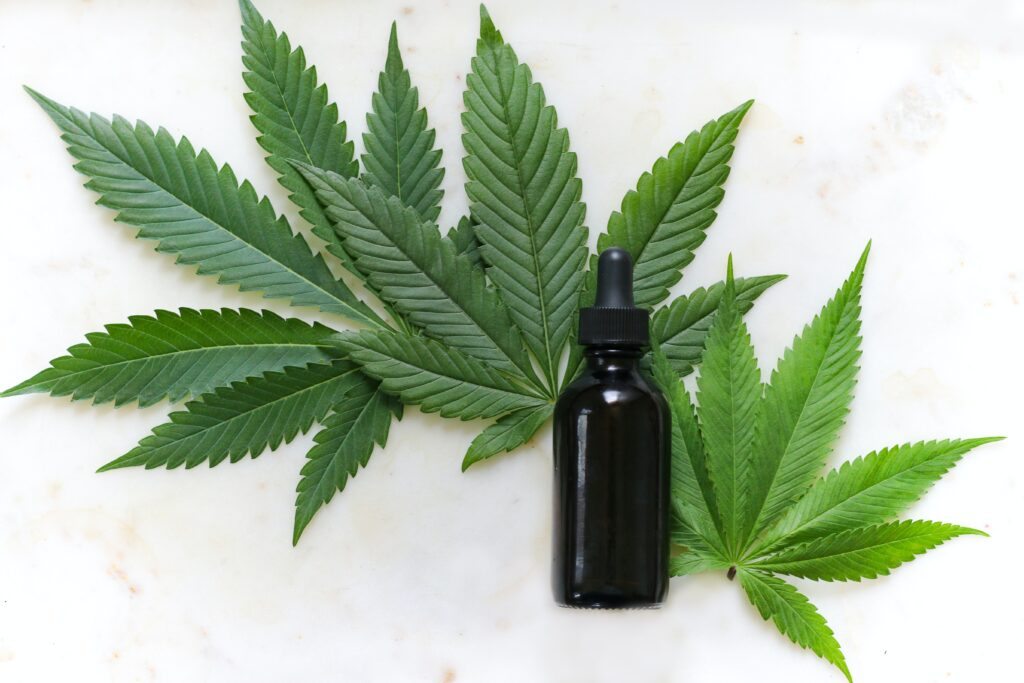
Cannabis tinctures are simple to make. You only need;
- A glass mason jar and lid,
- A mesh strainer or a coffee filter,
- Food-grade clear alcohol, and
- Cannabis flower.
Cannabis tinctures are typically made with decarboxylated flowers so that the THC and CBD are in their active form, but this depends on your desired effect from the tincture.
To read more on making your own cannabis tincture, you can head over to CBD Tincture: Dosage, How to Make It (Recipe), Effects & Benefits.
How to Store Cannabis Tinctures
To store your cannabis tincture properly, it should be contained inside a dark, amber-tinted, or other UV-protected glass bottle with an airtight lid and placed in a cool dark place. When processed and stored correctly, cannabis tinctures can last for long periods and will not emit an odor.
For tips on storing other cannabis products, check out our guide: The Best Way To Store Cannabis Long-term Without the Smell
Resources
- Peschel W. Quality Control of Traditional Cannabis Tinctures: Pattern, Markers, and Stability. Scientia Pharmaceutica. 2016;84(3):567-584. doi:10.3390/scipharm84030567 ↩︎
- Zuardi AW. History of cannabis as a medicine: a review. Revista Brasileira de Psiquiatria. 2006;28(2):153-157. doi:10.1590/s1516-44462006000200015 ↩︎
- Cather JC, Cather JC. Cannabidiol primer for healthcare professionals. Proc (Bayl Univ Med Cent). 2020;33(3):376-379. Published 2020 Jul 6. doi:10.1080/08998280.2020.1775437 ↩︎
- Lucas CJ, Galettis P, Schneider J. The pharmacokinetics and the pharmacodynamics of cannabinoids. British Journal of Clinical Pharmacology. 2018;84(11):2477-2482. doi:10.1111/bcp.13710 ↩︎
The information in this article and any included images or charts are for educational purposes only. This information is neither a substitute for, nor does it replace, professional legal advice or medical advice, diagnosis, or treatment. If you have any concerns or questions about laws, regulations, or your health, you should always consult with an attorney, physician or other licensed professional.

